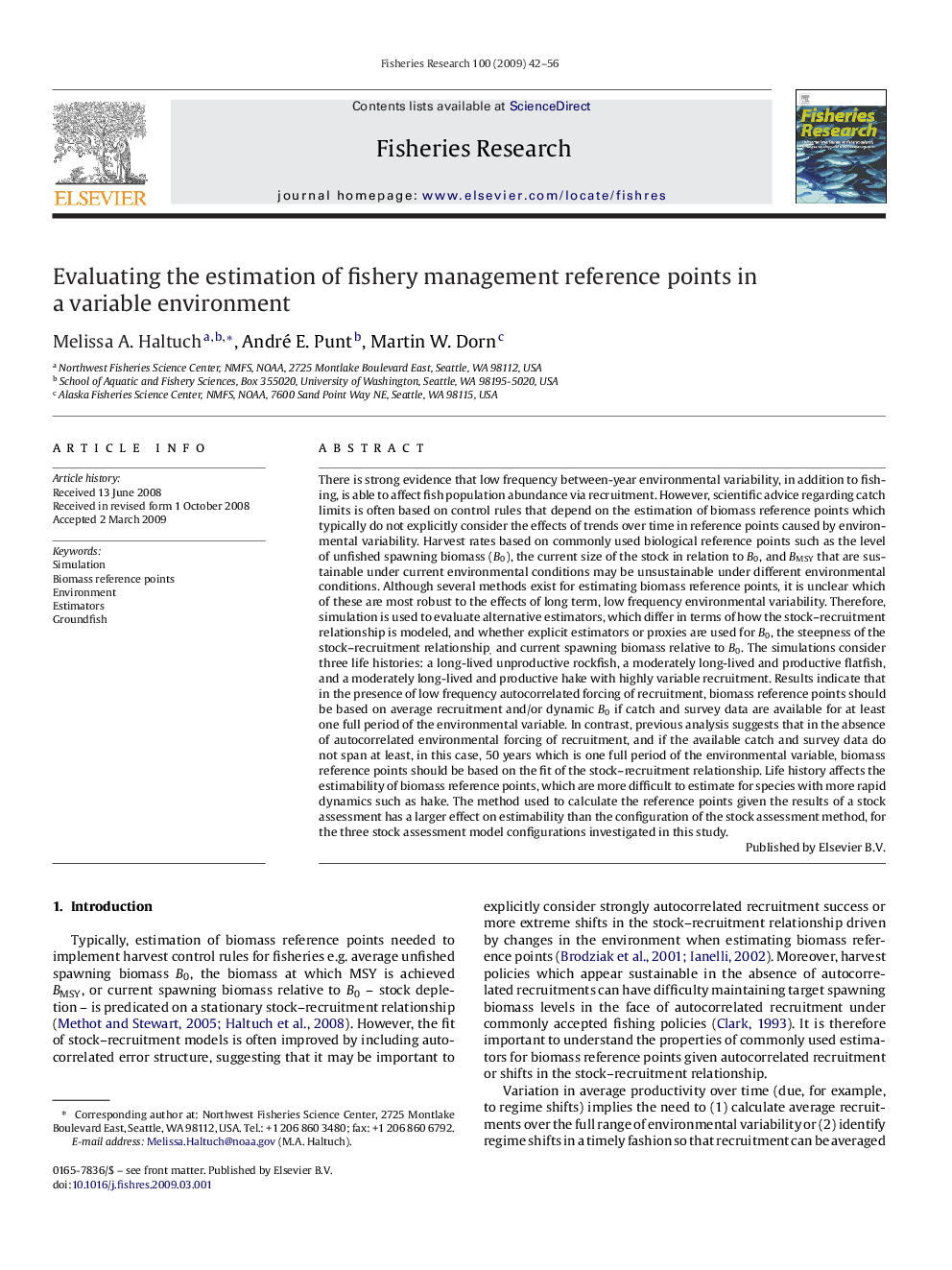| کد مقاله | کد نشریه | سال انتشار | مقاله انگلیسی | نسخه تمام متن |
|---|---|---|---|---|
| 4544101 | 1327180 | 2009 | 15 صفحه PDF | دانلود رایگان |

There is strong evidence that low frequency between-year environmental variability, in addition to fishing, is able to affect fish population abundance via recruitment. However, scientific advice regarding catch limits is often based on control rules that depend on the estimation of biomass reference points which typically do not explicitly consider the effects of trends over time in reference points caused by environmental variability. Harvest rates based on commonly used biological reference points such as the level of unfished spawning biomass (B0), the current size of the stock in relation to B0, and BMSY that are sustainable under current environmental conditions may be unsustainable under different environmental conditions. Although several methods exist for estimating biomass reference points, it is unclear which of these are most robust to the effects of long term, low frequency environmental variability. Therefore, simulation is used to evaluate alternative estimators, which differ in terms of how the stock–recruitment relationship is modeled, and whether explicit estimators or proxies are used for B0, the steepness of the stock–recruitment relationship, and current spawning biomass relative to B0. The simulations consider three life histories: a long-lived unproductive rockfish, a moderately long-lived and productive flatfish, and a moderately long-lived and productive hake with highly variable recruitment. Results indicate that in the presence of low frequency autocorrelated forcing of recruitment, biomass reference points should be based on average recruitment and/or dynamic B0 if catch and survey data are available for at least one full period of the environmental variable. In contrast, previous analysis suggests that in the absence of autocorrelated environmental forcing of recruitment, and if the available catch and survey data do not span at least, in this case, 50 years which is one full period of the environmental variable, biomass reference points should be based on the fit of the stock–recruitment relationship. Life history affects the estimability of biomass reference points, which are more difficult to estimate for species with more rapid dynamics such as hake. The method used to calculate the reference points given the results of a stock assessment has a larger effect on estimability than the configuration of the stock assessment method, for the three stock assessment model configurations investigated in this study.
Journal: Fisheries Research - Volume 100, Issue 1, September 2009, Pages 42–56